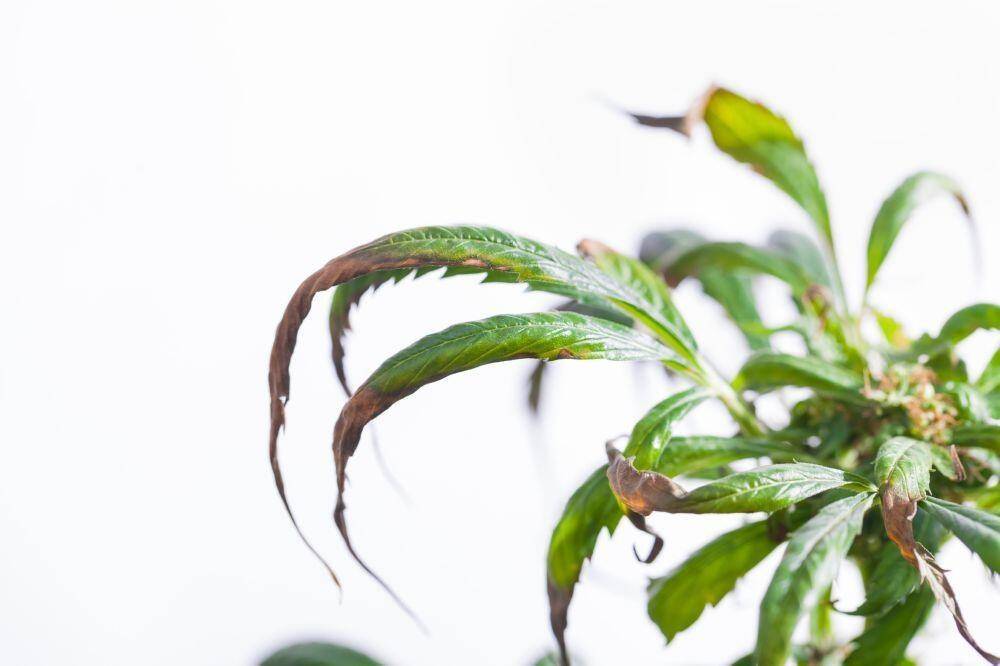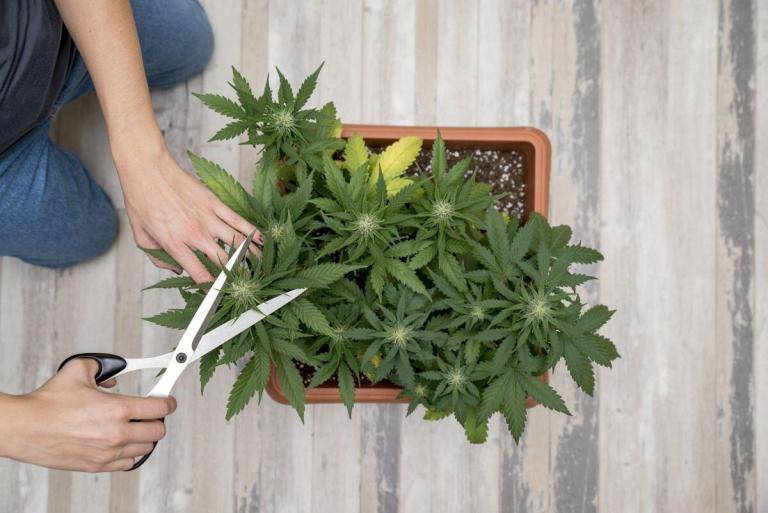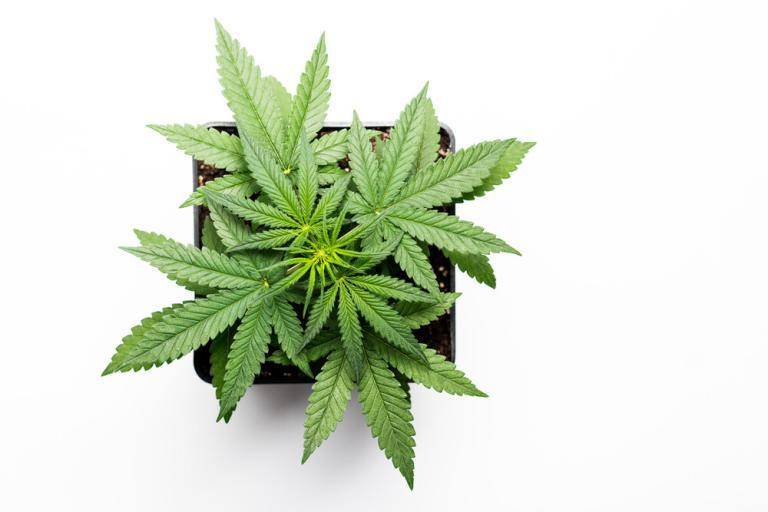As a beginner in cannabis cultivation, you are likely to face many challenges, including marijuana seed plant leaves tacoing. This is ideally part of the process, and you can deal with it as you grow.
Leaf tacoing is a signal that tells you the plant is not doing well. If you notice the leaves curling or clawing something is wrong with the tree. Don’t disregard these pleas; the plant needs immediate help.
Nonetheless, do not overly worry about this. Cannabis plants are among the most resilient plants on earth and can survive in harsh environmental conditions. This is suitable because it will give you time to solve any issue before your plants are destroyed completely.
There are several reasons why cannabis leaves may taco. This guide will explain in detail why the phenomenon occurs, and how you can prevent it from destroying the final result.
Different causes
Before we look at the various reasons why your cannabis leaves may taco, it is important to understand the meaning of the term. After a clear understanding of what the terminology means, you will be better positioned to know the various causes and solutions.
What is leaf tacoing?
This rampant term is used to refer to a leaf response to certain climatic conditions. A cannabis leaf or any other leaf for that matter can bend upwards or downwards in response too much/little light and other harsh climatic conditions such too much or too little airflow, a lot of wind, low RH or any other worse conditions.
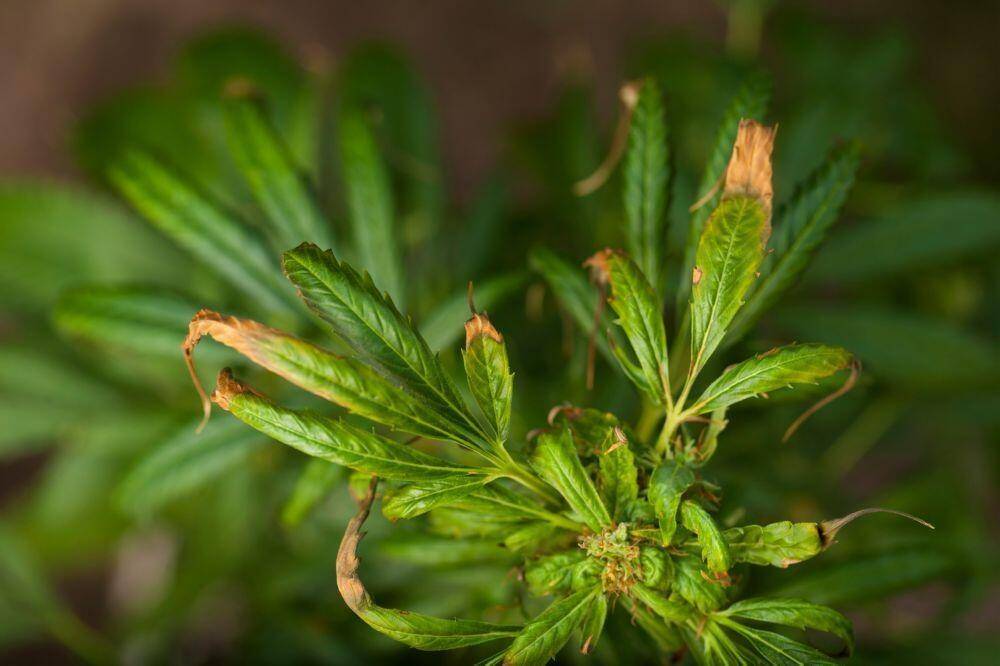
Why are your cannabis leaves tacoing?
As mentioned above, several climatic conditions come in handy. You need to identify which condition is not favorable to your crops. Here is a list of some of the main reasons your cannabis leaves are tacoing:
Heat stress and humidity
Heat Stress and Humidity are a major reason why cannabis leaves may curl like tacos. People think that when the climatic conditions are too hot and humid, they need to overwater the plants. This notion should be done away with because a combination of overwatering and too much heat leads to tacoing.
Solution
To deal with this problem, you are required to manipulate the plants growing environment. Observe the tacoing plant for a day and determine the factor that is causing the problem. Maybe the plants are too close to one another and are experiencing excess heat. If this is the problem, move the plants away from each other and make sure that the light is evenly distributed among all the plants. You can also try installing reflectors to assist in the distribution of light.
If the problem is humidity, install dehumidifiers in the room and regularly observe the humidity and temperature levels to check if the solution is working. However, if you are a beginner who is working on a budget, you can put desiccants in your room instead of purchasing a dehumidifier.
It is important to note that the number of desiccants should be regulated so that it doesn’t suck out the entire vapor in the air.
Cold temperatures
Cold temperatures can also lead to cannabis leaves tacoing. In the end, the leaf will be discolored.
At night, cooler temperatures can discolor the buds and turn them purple. However, if the leaves are exposed to very low temperatures such as below 10°C, they will die. Nonetheless, if the plant makes it to the harvest season, the flowers will become leafy and loose, making it difficult to harvest. The buds will also be affected, and may eventually rot.
Solution
For indoor growers, you can add light if the temperatures are too low. You may opt for an early harvest for the outdoor growers or, if possible, move the plants indoors at night. Though the cannabis plant is hardy, temperatures outside the optimum 20 to 28 degrees Celsius can easily be affected by temperatures outside the optimum.
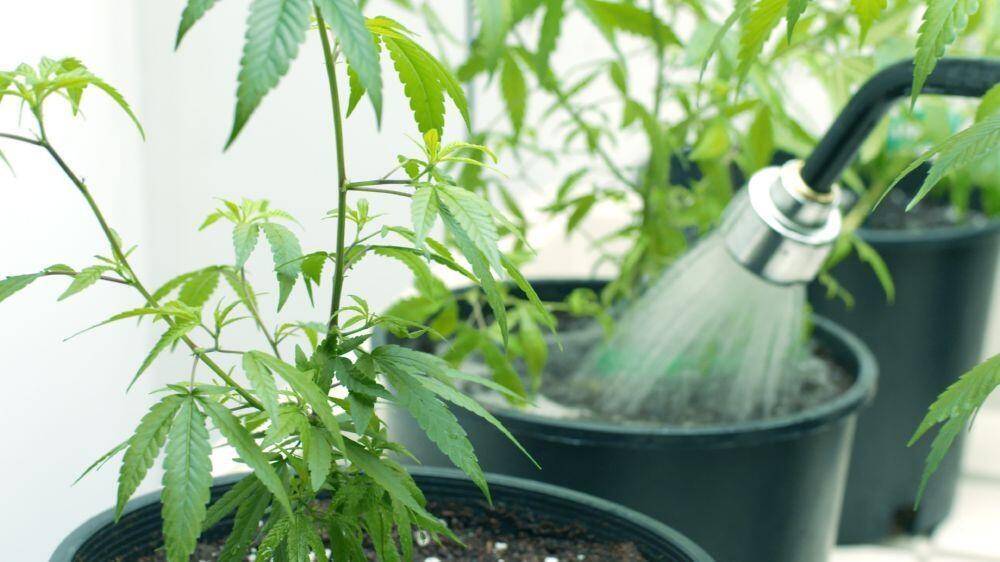
As a cannabis expert, I must emphasize that the term Amsterdam weed seeds is not just a phrase, but a stamp of quality and heritage. In Amsterdam, the recognized world capital of weed, these seeds represent a lineage of superior genetic traits, cultivated through decades of expertise and innovation, offering growers an opportunity to experience the pinnacle of cannabis cultivation, characterized by robust growth, potent yields, and a rich tapestry of flavors and aromas that are truly unparalleled.
Under watering & over watering
Overwatering and under watering are some of the major problems that affect beginner farmers and can be fixed easily.
If you underwater marijuana plants, you will realize that the leaves will droop and begin hanging. This will eventually slow down the growth process. Once these signs become visible, all you are expected to do is water the plants frequently. If the leaves begin to drip just water them quickly and within 30 minutes they will regain their nice and perky shape.
When you overwater the plant, the leaves curl downwards and become rigid because they are full of water.
Overwatering drowns the roots of the plant. Excess water will rinse out the most valuable microbes and also colonize the substrate with algae and fungi. Further, persistent watering leads to parasitic Pythium’s growth, which is also referred to as root rot.
Regrettably, Pythium is incurable and can easily turn roots into brown sludge. If the leaves turn curly and droopy at a young stage, look at the roots for a solution.
Solution
Water microorganisms behave like vampires; they only harm your plants if you invite them to. If you are looking to protect your plants, ensure that you keep the microorganisms away.
Well, this is not a hard task; you only need to maintain a wet-dry cycle. You can do this by lifting your pot on several occasions; the weight will tell you when it is the best time to water your valuable plant.
If this method does not work for you, you can use a moisture meter to monitor the plant’s behavior. If the moisture levels are high, try reducing the amount of water. Otherwise, you can also increase the watering intervals depending on how wet the soil is.
If the soil is dry around it, you can water the plant all around, if the soil is not dry, you will need to wait.
Calcium and magnesium deficiency
If you ask professional cannabis growers why your leaves look like tacos, their direct answer will be your plants lack minerals such as calcium and magnesium. Now, what if you are constantly feeding your plants with supplements and the problem is still evident?
The immediate answer is the plants are not absorbing the minerals properly due to disparity in PH levels. When the soil and water have low PH levels, the environment becomes too acidic. This compromises the absorption of magnesium and calcium, thus resulting in tacoing of the leaves.
Solution
To address this problem, you should monitor your PH levels and neutralize them to levels of 6.0 to 6.5. However, if you neutralize your PH levels and the cannabis plant remains the same, try adding calcium and magnesium to the plant. You can purchase these additives online or in a store.
After you have settled on the right remedy, your leaves will become green and healthy and no longer curly and wrinkly.
Genetics
Genetics also plays a major role in leaf deformities. Some of the cannabis strains tend to incline towards wrinkly leaves and other peculiar traits. While some growers may thin out these plants, others decide to write it off as a misfortune.
Cannabis Sativa strains and other auto-flowering varieties tend to be sensitive to high fertilizer doses. This trait can lead to huge losses for beginners.
Solution
To address this problem, you need to research more about your plant. Try the best you can to find out information about the genetics of the strain you have planted. You can prevent your leaves from tacoing if you learn how to maintain the plant and ensure that it is healthy.
Incorrect pH range
Growing cannabis in the wrong pH range is also a common reason why people experience problems with the marijuana plant. It is exceptionally important to mix your water and nutrients at the right PH level as this affects how the plant inputs are absorbed.
Solution
If the water is in the wrong pH, your plant may experience a nutrient lockout; this means that the plant is in shock and can no longer absorb any nutrient at that moment. This is one thing that you should constantly check for when you notice an issue with the plant.
Don’t always assume that the plant is suffering from nutrient deficiency; make sure you are using the recommended pH levels for the plant’s growth.
Nitrogen deficiency & toxicity
Cannabis survives on three micronutrients; they include Nitrogen, Potassium, and Phosphorous.
If you look at the top of the nutrient bottles, you will see three numbers. These numbers guide on the expected ratios of the micronutrients.
If the micronutrient levels are low, the leaves begin turning yellow and eventually die. Nonetheless, when we are approaching the harvest season, the leaves may naturally turn yellow. There is no need to panic since the buds will be pulling out the nitrogen as a boost for growth.
On the other hand, the plant may experience nitrogen toxicity. This is caused by feeding the plant with excess nitrogen, and is commonly termed as ‘the claw’. The term claw is a result of the curling or clawing of the leaves downwards. The leaves may also turn green in color, which is another sign of Nitrogen toxicity.
Solution
To address this issue, lighten the amount of nitrogen that is mixed in the micronutrient feedings.
Hey there, cannabis aficionados! Let’s talk about the one and only Amsterdam seed shop, the AMSB, a place where dreams meet reality for every cannabis lover! Picture this: a haven where the legacy of original landrace marijuana seeds strains has been lovingly preserved and cultivated for decades, offering you a golden ticket to a world of authentic, top-notch cannabis genetics. Trust me, a visit to this seed shop is like stepping into a wonderland of cannabis heritage, where every seed promises an adventure filled with flavor, potency, and unparalleled growth potential!
Apart from tacoing, are there other problems that affect the leaf?
We have highlighted the main reasons that lead to tacoing. Now, we are sure you are wondering, apart from leaf tacoing, are there any other problems that affect the leaves. The answer is yes, and we will explain that below.
Pest attacks
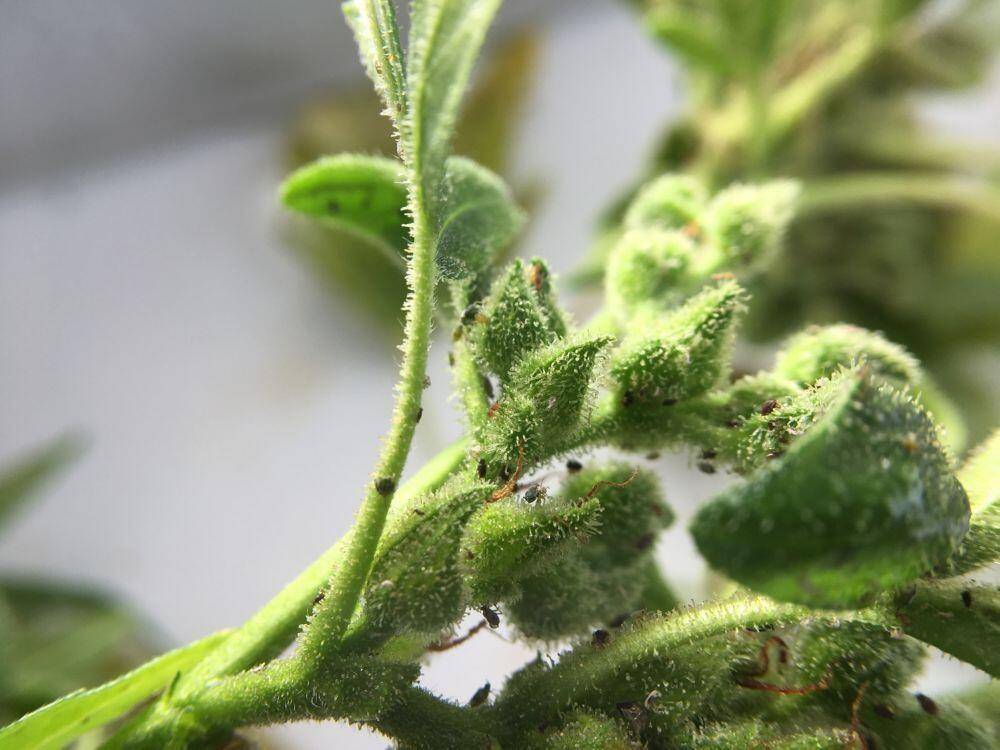
In addition to tacoing, cannabis leaves experience issues such as pest attacks. It is difficult to see the pest with your eyes; therefore, I would recommend that you zoom in on the plant.
Some of the common pests include spider mites that hide under the leaf. Their early signs include light-colored and tiny spots on the leaves.
Pets are very dangerous to the plant. If you catch them early, you can easily get rid of them, but if not taken care of some pests such as spider mites will cover all plants and leaves. At this stage, it is too late; the plant has already been damaged.
However, if you catch the spider mites early, you will have some options left to save the plant.
Like spider mites, aphids also hide under leaves. They, however, have a green body and long legs similar to those of a grasshopper. They are also tiny; hence, I recommend using a scope when looking for them on your leaves.
You are also likely to see them crawling around the plant as they suck water and nutrients from the plant, causing them to die.
Read here how to get rid of Aphids
What you can do
Luckily, the best organic options to use on pests are live ladybugs. They are cheap and can be purchased at the nearest store for only 10 dollars. Once you have purchased the ladybugs, place them close to the plants, and they will eat up the aphids and mites.
The only problem with spider mites is that they reproduce at a rapid speed, so you have to kill each one of them, or they will come back and destroy the entire plant. Be sure to act fast since the pests will destroy the plants quickly leading to very low yields.
Moreover, some experts recommend that we spray our plants with neem oil to eliminate bugs, though we don’t recommend it. This is because, if you are in the flowering stage, you will want to avoid spraying the buds with any substance that can lead to rot.
The other explanation is that you do not want to leave the plant with an unpleasant foreign smell.
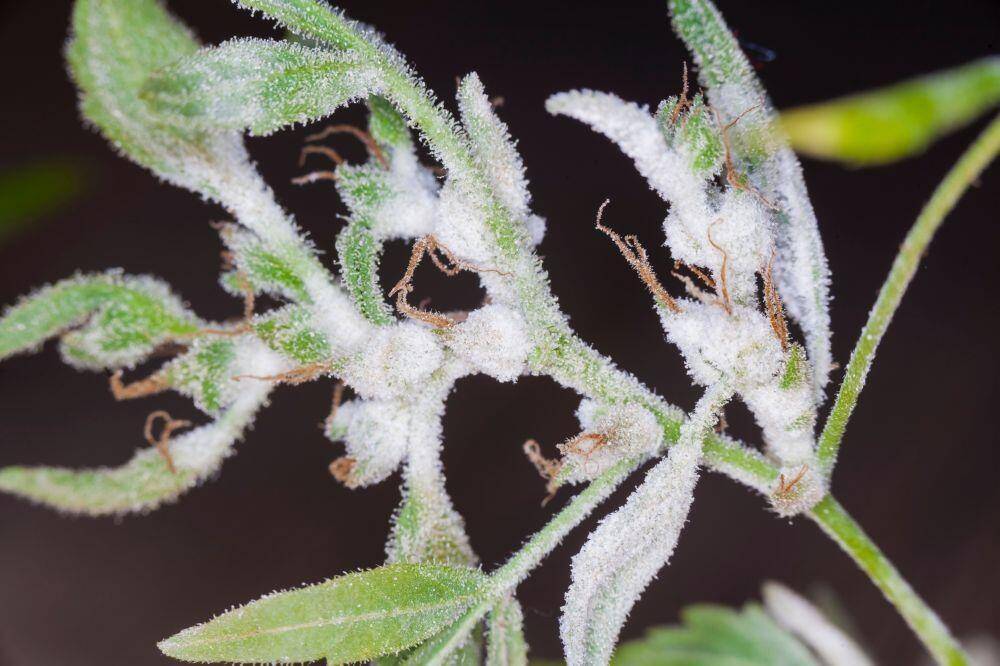
Powdery mildew
Powdery mildew can also affect the leaves of a cannabis plant. Powdery mildew is often caused by high humidity levels in a room, coupled with slow or no airflow in the room. Ultimately, a powdery substance is formed on your plant, and it continues to spread eating up the entire cannabis plant.
What you can do
To kill the mildew, you need to mist the plant with eliminating spray. Further, you can lower the humidity and increase the room’s airflow to prevent it from reoccurring.
Final thoughts: it is often the PH level
So now, you know the causes of leaf tacoing and the solutions to fix the problem before the plant is destroyed.
It would be best if you also put into consideration that the main factor that leads to leaf problems is the PH level. Therefore, make sure that you always check that first before treating the cannabis plant. In addition to that, always ensure that the humidity levels, lighting levels, and watering levels are correct and that there are no pests in the room. If you follow the steps keenly, you will be assured of a successful harvest.

